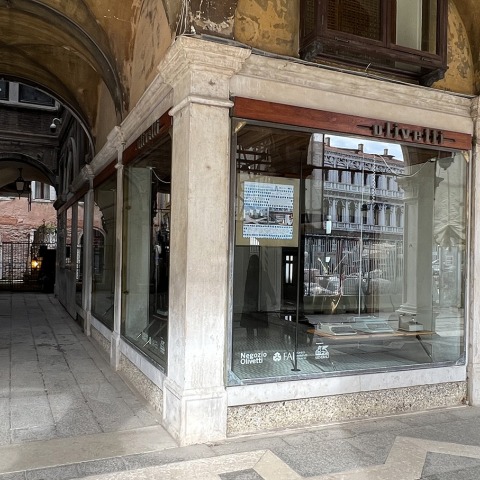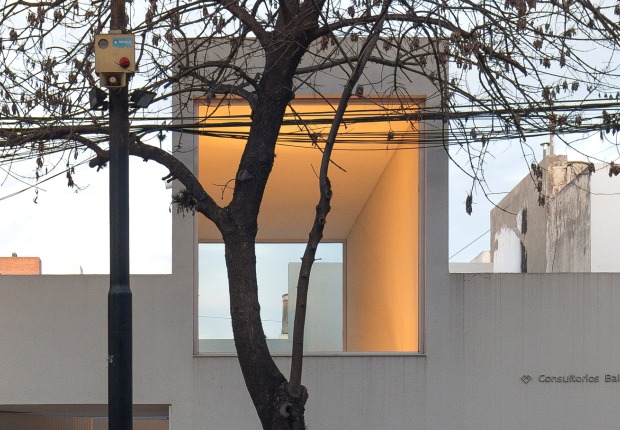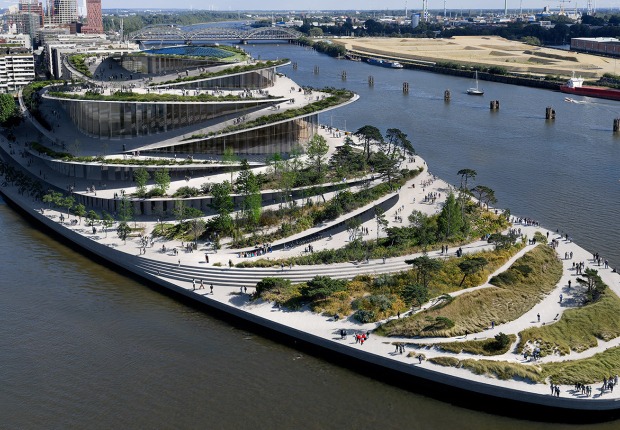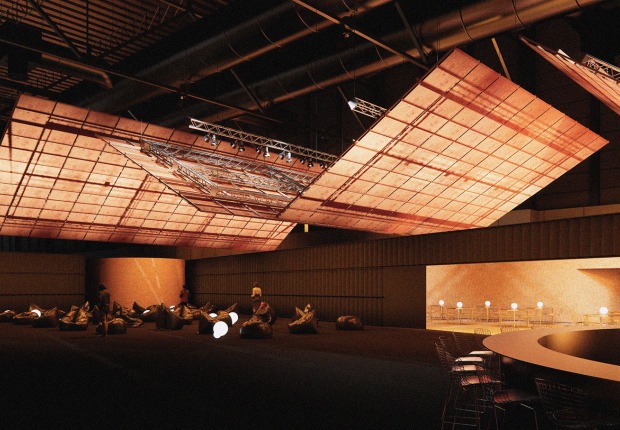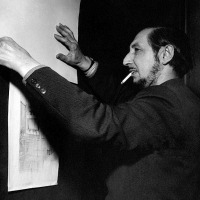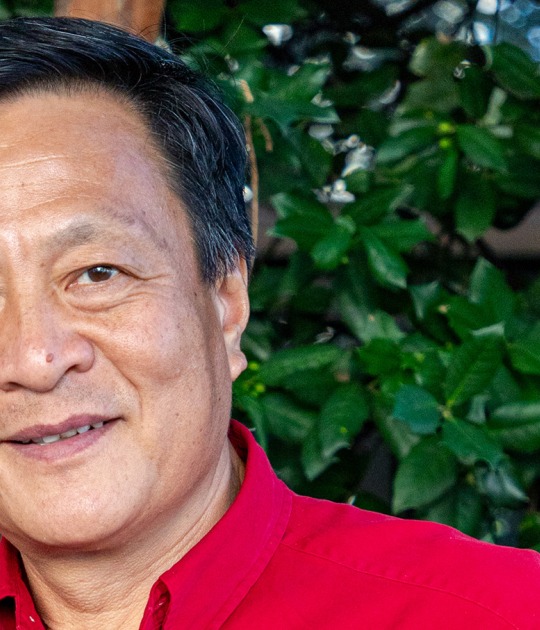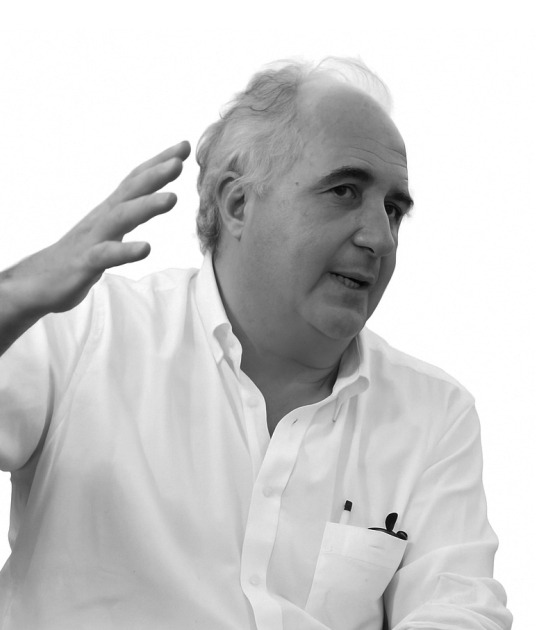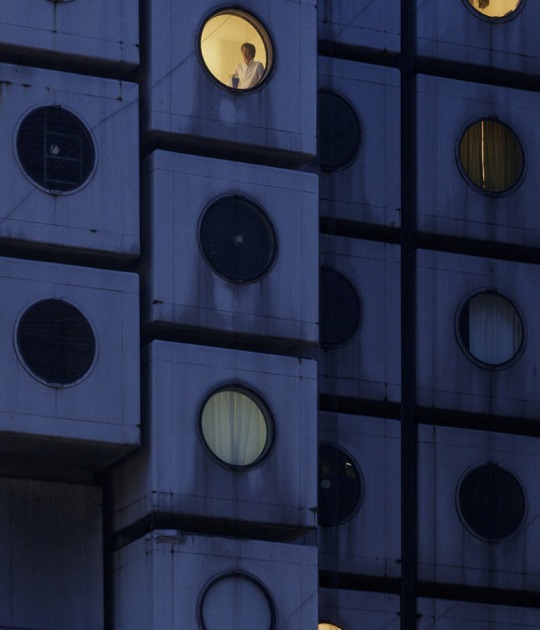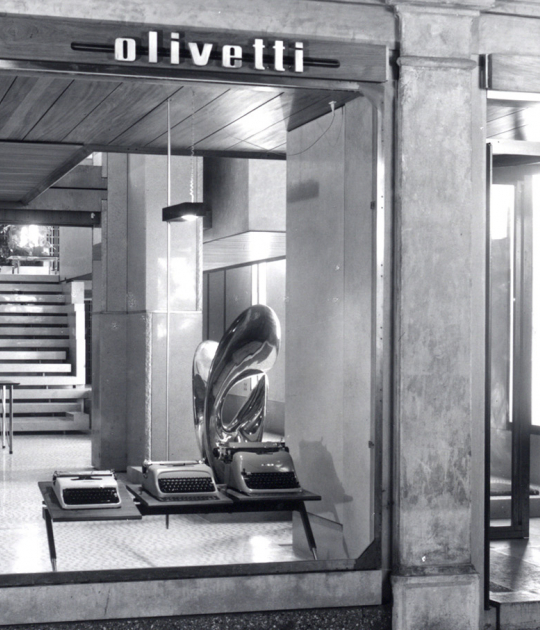When Scarpa recognizes the place, he finds a fragmented space, dark and divided in two by a wall, with two small stairs that lead to an upper floor and a mezzanine, both very low and dimly lit. In total, a space that has dimensions of 21 meters deep, 5 meters wide and 4 meters high.
Scarpa completely cleans the existing space, introduces two balconies on the sides and places a new staircase in the center of the new space, making it the central point of the intervention. In addition, Scarpa increased the number of windows, and creates a new pavement for the ground floor using a mosaic of irregularly shaped glass tiles, with four colors marking the different areas of the showroom: the front entrance is red, the central one is white/grey , the blue side and the yellow back.
Scarpa finishes off the ground floor with another focal element by installing Alberto Viana's 1956 sculpture titled Nudo al sole, on a plinth of black Belgian marble covered in a veil of subtle moving water.
The palette of materials used was carefully selected: Aurisina marble slabs to cover the (pre-existing) pillar and the floor of the mezzanine landing; rosewood for the shelves on which the Olivetti machines rest, anchored to the ground only at the front and supported by stainless steel braces; and African teak for the balconies. The walls are made of Venetian plaster on panels, interspersed with vertical fluorescent lights, protected by sheets of frosted glass. Additional illumination is provided by sliding ebony lamps on steel cables.
On the upper floor, the windows that look onto the square are internally screened by sliding oval grates made from teak and rosewood, whereas the shelves for the typewriters are made from rosewood or metal and glass. The two rooms at the side - one of which is still fitted out for use as an office - have either plaster walls or walls with a Venetian stucco finish.
The motif won the teak grate is also found on the veering of the Water door” that opens out onto the call at the rear; here you can also see the lower section of the tall stone-and-stucco plaster that continues into the mezzanine with a flower-holder compartment.

Olivetti showroom in Piazza San Marco in Venice by Carlo Scarpa. Photograph by José Juan Barba
Renovation
Carlo Scarpa's work has been recovered and valued little by little, after his accidental death in 1978. His delicate works in Venice have been restored in recent decades. In 1996, the restoration of the Aula Manlio Capitolio in the Civil and Criminal Court of Venice (designed by Scarpa between 1955-1957) was completed and in June 2006 the ticket office of the Biennale ai Giardini was completely recovered. These restorations allowed to accumulate experience and knowledge in the techniques and use of Carlo Scarpa's materials.
After a period of inappropriate use and inadequate maintenance. In 1984 the old showroom had been converted into a souvenir shop. In 2009 and after a precarious state of maintenance, a committee of the Ministry of Culture created for the conservation of Scarpa's works decided to act. A performance carried out with exquisite respect, in a very careful and rigorous process, which allowed a meticulous and delicate recovery, managing to return Carlo Scarpa's extraordinary store for Olivetti to its initial splendor.
BIBLIOGRAPHY.
